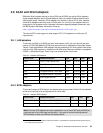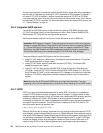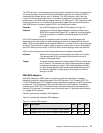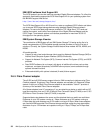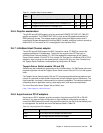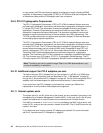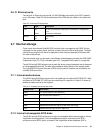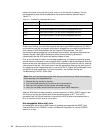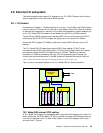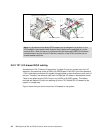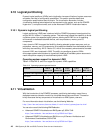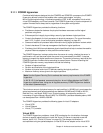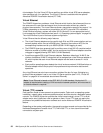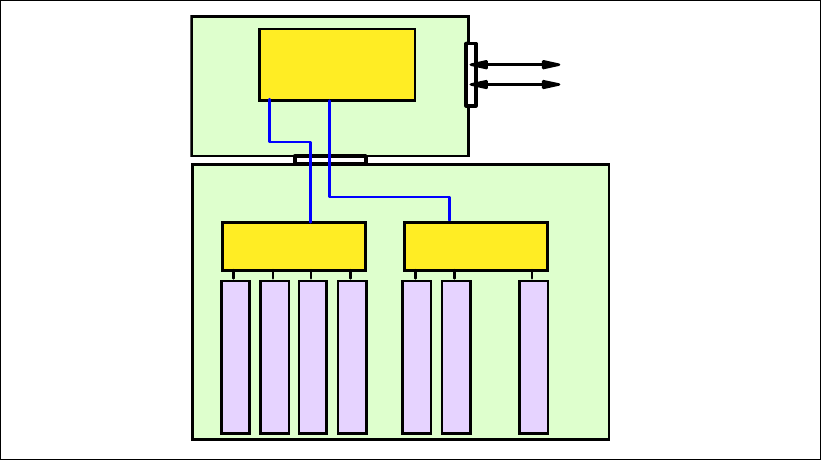
Chapter 2. Architecture and technical overview 43
2.8 External I/O subsystem
This section describes the external I/O subsystem, the 7311 D20 I/O drawer that is the only
drawer supported on the p5-520 and p5-520Q systems.
2.8.1 I/O drawers
As described in Chapter 1, “General description” on page 1, the p5-520 or p5-520Q systems
have six internal PCI-X slots, which is enough in many cases. If more PCI-X slots are needed
to dedicate more adapters to a partition or to increase the bandwidth of network adapters, up
to four 7311 Model D20 I/O drawers can be added to the p5-520 or p5-520Q systems.
The p5-520 or p5-520Q systems have a standard RIO-2 bus to connect the internal PCI-X
slots through the PCI-X to PCI-X bridges and support up to four external I/O drawers.
An optional RIO-2 adapter (FC 2888) is required for external RIO-2 devices, such as I/O
drawers.
The 7311 Model D20 I/O drawer must have the RIO-2 loop adapter (FC 6417) to be
connected to the p5-520 or p5-520Q systems. The PCI-X host bridge inside the I/O drawer
provides two primary 64-bit PCI-X buses running at 133 MHz. Therefore, a maximum
bandwidth of 1 GBps is provided by each bus. To avoid overloading an I/O drawer, you
should follow the recommendation in the IBM System p5 Hardware Information Center at:
http://publib.boulder.ibm.com/infocenter/eserver/v1r3s/index.jsp
Figure shows a conceptual diagram of the 7311 Model D20 I/O drawer subsystem.
Figure 2-10 Conceptual diagram of the 7311-D20 I/O drawer
7311 Model D20 internal SCSI cabling
A 7311 Model D20 supports hot-swappable disks using two 6-pack disk bays for a total of 12
disks. Additionally, the SCSI cables (FC 4257) are used to connect a SCSI adapter (that can
have various features) in slot 7 to each of the 6-packs, or two SCSI adapters, one in slot 4
and one in slot 7 (Figure ).
RIO
133 MHz,
64-bit PCI-X
PCI-X Bridge
1
3
PCI-X Host
Bridge
2
133 MHz, 64-bit PCI-X
4
6
4
/
1
3
3
6
4
/
1
3
3
6
4
/
1
3
3
6
4
/
1
3
3
PCI-X Bridge
5
6
7
6
4
/
1
3
3
6
4
/
1
3
3
6
4
/
1
3
3



